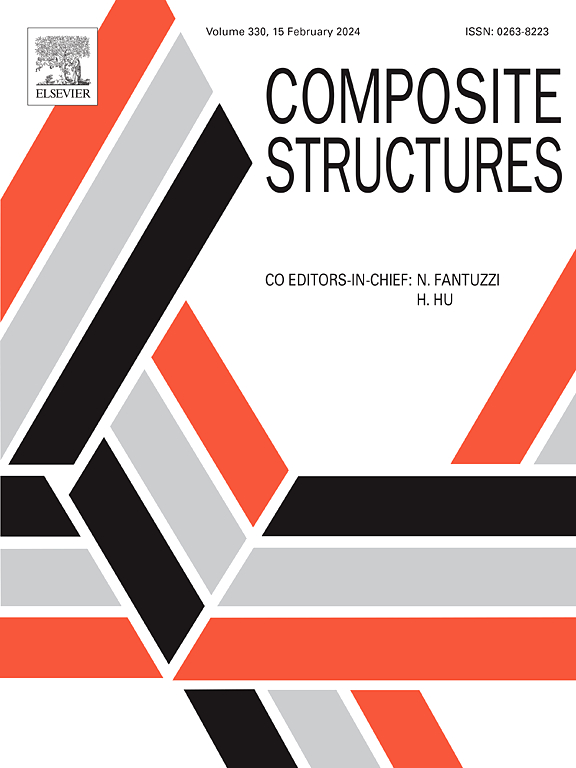Mechanical model analysis of column-footing joints with combined socket-corrugated pipe connection
IF 6.3
2区 材料科学
Q1 MATERIALS SCIENCE, COMPOSITES
引用次数: 0
Abstract
The socket connection method is widely used in precast column, particularly in seismic regions. However, reducing the socket-depth to lower costs may lead to shear failure in the socketed part of the columns. To address this issue and achieve cost objectives, a new approach combines shallow sockets with corrugated pipes for column-footing joints. Comparative tests were conducted to investigate failure in columns with socket-corrugated pipe connections (SCPC), shallow sockets (SSC), and cast-in-place (CIP). Furthermore, finite element models were employed to validate the experimental and simplified model results. The findings suggest potential shear failure in shallow socket connections, which can be mitigated by using the combined socket-corrugated pipe method that alters force transmission paths. As the axial load ratio increases, both the ultimate lateral load capacity of the specimen and the local stresses at the column base increase. In addition, the ultimate lateral load capacity of the column and the stress of the connection reinforcement are increased by increasing the strength of the longitudinal reinforcement, consequently amplifying the extent of joint area damage. Finally, a simplified strut-and-tie model of the SCPC, validated against numerical and experimental data, accurately represents force paths, ultimate lateral load capacity and failure modes in socket joints.
承插式波纹管组合连接柱脚接头的力学模型分析
承插式连接方法被广泛应用于预制柱中,尤其是在地震地区。然而,为降低成本而减少承插深度可能会导致柱子承插部分出现剪切失效。为解决这一问题并实现成本目标,一种新方法将浅承插口与波纹管结合起来,用于柱脚连接。我们进行了对比试验,研究了承插式波纹管连接(SCPC)、浅承插式连接(SSC)和现浇连接(CIP)支柱的失效情况。此外,还采用了有限元模型来验证实验和简化模型的结果。研究结果表明,浅承插口连接可能会出现剪切破坏,而采用承插口-波纹管组合方法可以改变力的传递路径,从而减轻这种破坏。随着轴向荷载比的增加,试样的极限侧向承载能力和柱基局部应力都会增加。此外,通过增加纵向钢筋的强度,柱子的极限侧向承载能力和连接钢筋的应力也会增加,从而扩大了连接区域的破坏程度。最后,根据数值和实验数据验证了 SCPC 的简化支柱-拉杆模型,该模型准确地反映了承插式连接的受力路径、极限侧向承载能力和破坏模式。
本文章由计算机程序翻译,如有差异,请以英文原文为准。
求助全文
约1分钟内获得全文
求助全文
来源期刊

Composite Structures
工程技术-材料科学:复合
CiteScore
12.00
自引率
12.70%
发文量
1246
审稿时长
78 days
期刊介绍:
The past few decades have seen outstanding advances in the use of composite materials in structural applications. There can be little doubt that, within engineering circles, composites have revolutionised traditional design concepts and made possible an unparalleled range of new and exciting possibilities as viable materials for construction. Composite Structures, an International Journal, disseminates knowledge between users, manufacturers, designers and researchers involved in structures or structural components manufactured using composite materials.
The journal publishes papers which contribute to knowledge in the use of composite materials in engineering structures. Papers deal with design, research and development studies, experimental investigations, theoretical analysis and fabrication techniques relevant to the application of composites in load-bearing components for assemblies, ranging from individual components such as plates and shells to complete composite structures.
 求助内容:
求助内容: 应助结果提醒方式:
应助结果提醒方式:


